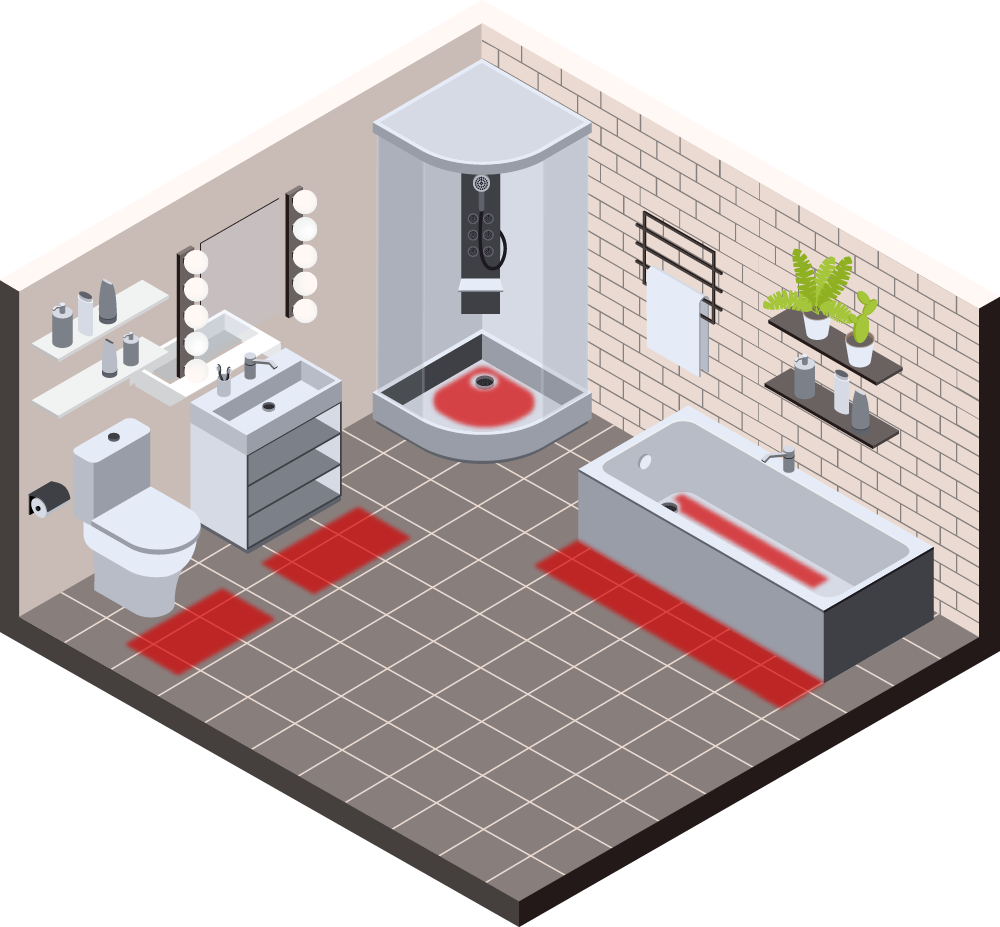SLIP & FALL PROBLEMS IN BATHROOMS
Our bathrooms contain a unique combination of hazards which make them the most hazardous rooms in our homes. Water and other slippery liquids are being used on slippery surfaces like tile and natural stone. Bathmats, bathtubs, and towels act as tripping hazards in a small confined space.
Together, these hazards mean that bathroom injuries result in over two hundred thousand emergency room visits a year. In fact, you are about four times more likely to be injured when getting out of the shower as getting in!

In my book, Stop-the-Slip, I highlight my own example of how something as simple as a bath mat can become a trip-and-fall hazard.
Thom Disch
Not long ago, I bought one of those cushy foam bathroom mats. It looked great and felt good under my feet and it kept me from slipping when I got out of the shower. The problem was that the area in front of my bathtub is also a walking path. So when I walked alongside the bathtub and stepped on the edge of the mat, the plush foam layer caused the mat to rise up on each side of my foot. When I took my next step, I would trip on the raised part of the mat. The first time I did this, it caught me by surprise, but I was able to recover. I thought I must be getting clumsier in my old age. I was also surprised when the same thing happened the next day, and again and again. Luckily, I was able to catch myself and recover each time without falling.
I must have tripped on that bathmat over a dozen times before I realized that the problem wasn’t me—it was the bathmat. The bathmat worked fine for absorbing water when I got out of the shower, but it wasn’t designed for walkway traffic. When my foot was half on the mat and half off, the foam came up over an inch on each side of my foot, created a tripping hazard. The solution: get a different style of bathmat for this bathroom and move this foam mat to a bathroom that didn’t have a walking path alongside the tub.
PREVENTION: The simplest thing you can do to reduce the risk of falling in your bathroom is to keep it clean. Wipe up splashes of water. Clean up all spills when they happen. Body oils, soaps, shampoos, and conditioners are slippery and may even leave a residue after they’ve been wiped up; you may have to wash the area to get rid of the slip risk completely. Hang up towels and washcloths when you’re finished using them. Don’t keep extra supplies on the floor in places where you may trip on them.
MITIGATION: A bathmat with a good, non-slip backing placed just outside your tub or shower will dry the bottoms of your feet and provide you with a nonslip transition. Throw rugs that don’t have a nonslip backing may bunch or slip and create additional hazards. If you notice that a particular style of bathmat isn’t keeping you safe, replace it with a style that works better for you.
For tubs and showers, ClearGrip Circles, ClearGrip Treads, Stop-the-Slip Shower & Bath Strips and Stop-the-Slip Shower & Bath Mats can go a long way to making these slip-prone objects safer.
The first thing someone will do when they start to slip is reach for something to help them keep their balance. Grab bars are a great way to avoid a fall. A bar placed inside the shower and on the wall near where you exit can help you maintain your balance if you should slip. A standard towel rack isn’t designed to act as a grab bar, but there are towel racks that will also work as grab bars.
Don’t overlook the toilet area as you examine safety hazards in your bathroom. Raised toilet seats, grab bars and floor-to-ceiling posts can be installed around the toilet to provide the extra support we need as we age.
